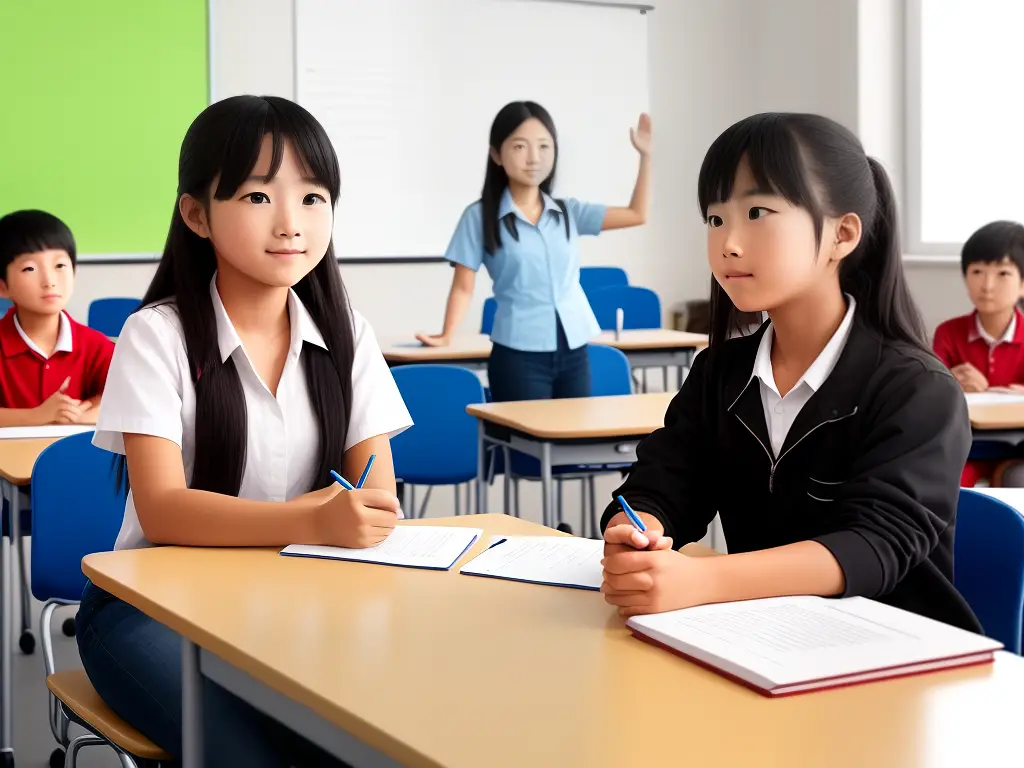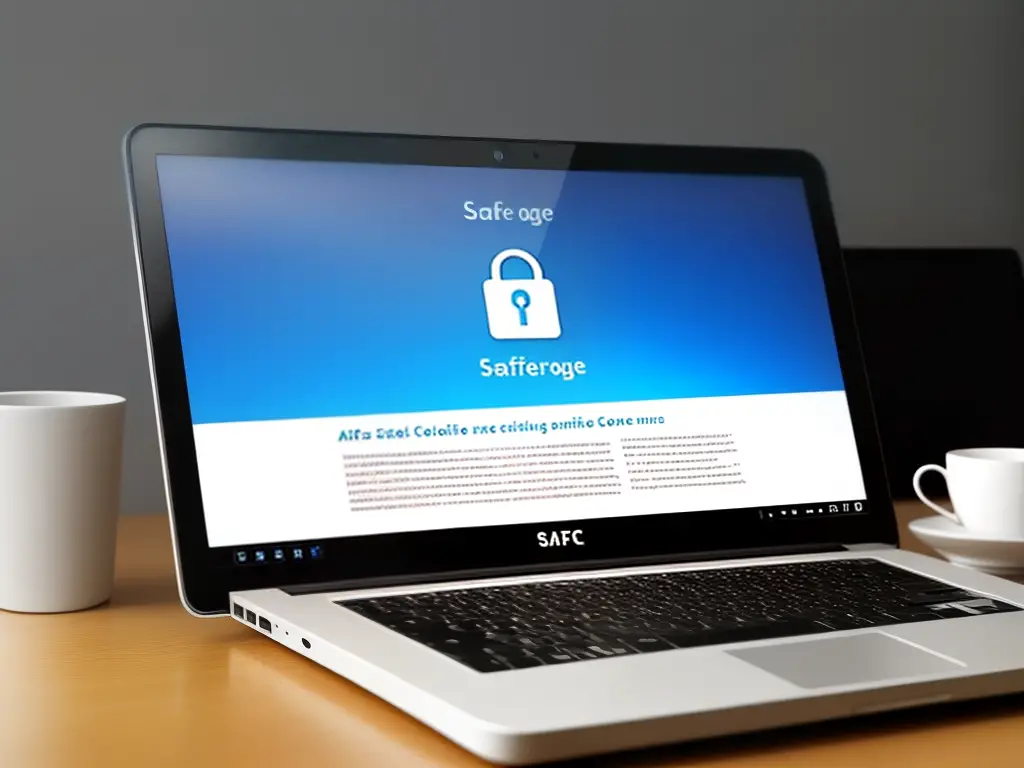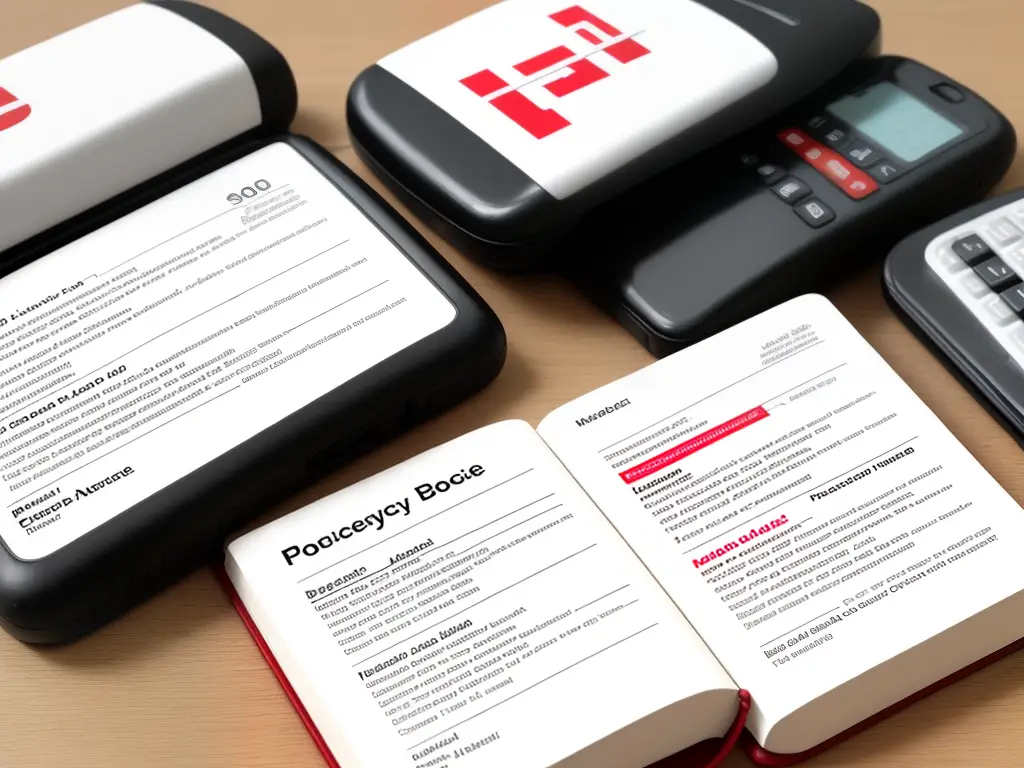As a child, it is incredibly important to learn and understand the basic rules and regulations that govern various aspects of our lives. These guidelines not only serve to keep us safe, but they also shape our behavior, and as responsible members of society, it is our duty to follow them. The following topics of road safety, school policies, internet safety, personal hygiene, fire safety, first aid, stranger danger, home safety, and emergency contacts, are essential building blocks to ensure not only our wellbeing but also those around us.
Pedestrian Safety Rules and Regulations
Pedestrian safety is an essential aspect of road safety rules and regulations. As road users, it is important for both children and adults to understand the importance of pedestrian safety. One key aspect of pedestrian safety is walking on sidewalks whenever possible and facing towards oncoming traffic if there are no sidewalks available. It is also important to be alert and attentive while walking on the streets, specifically avoiding distractions like cell phones or listening to music with headphones.
Traffic signals play a vital role in maintaining road safety for all users, including pedestrians, cyclists, and motorists. These signals provide clear indications of when it is safe for a pedestrian to cross the road or when drivers need to be cautious. It is crucial to pay attention to traffic signals at all times, as they provide essential information. For example, red signals indicate that you should stop, while green signals indicate that it is safe to move forward. Remember to never run on roads and always wait for your turn to minimize the risk of accidents.
Crossing the road at designated crosswalks is yet another essential safety rule to follow. Crosswalks are marked sections of roads where pedestrians are allowed to cross safely. These are typically indicated by painted lines or signs, and they signal drivers to be cautious when approaching these areas, reducing the risk of accidents. It is important for pedestrians to always cross the road at these designated crosswalks and make eye contact with drivers to ensure they have been noticed before proceeding.
Wearing helmets is a crucial safety measure for cyclists, as it reduces the risk of serious head injuries in case of an accident. The importance of wearing helmets cannot be stressed enough, as they have been proven to save lives and minimize the severity of potential injuries. Cyclists should always ensure that their helmets fit well and are securely fastened, as well as being in compliance with safety standards.
Knowing and following rules and regulations in various aspects of our lives is crucial for maintaining order and ensuring everyone’s safety. Especially in areas like road safety, adhering to guidelines such as pedestrian safety rules, following traffic signals, crossing roads at designated crosswalks, and wearing helmets while cycling can help us create safer roads for everyone, significantly reducing the risk of accidents. Acquiring knowledge about the dangers associated with not following these guidelines is key to fostering a deep understanding of preventive measures and ultimately keeping everyone safe.

The Importance of School Rules
Just as important as road safety is adhering to the rules and regulations in a school environment. These rules are essential for maintaining discipline and order so that all students can learn, interact, and have fun in a safe, respectful, and inclusive atmosphere. Understanding and following school policies that govern activities such as attendance, punctuality, uniforms, and the use of electronic devices is pivotal. If unsure, students should consult their school handbooks or seek clarification from teachers or staff members. As with road safety, educating ourselves and our children about the importance of these guidelines helps maintain a safe and harmonious environment.
In the classroom, it is expected that students abide by a code of conduct that ensures a positive learning environment for all. This typically includes arriving on time, being prepared with the necessary supplies, showing respect to teachers and classmates, raising your hand to ask questions, and following any specific guidelines set by the classroom teacher. Additionally, students should avoid disruptive actions such as talking out of turn, using electronic devices without permission, or leaving the classroom without permission.
Library rules are another important set of guidelines that ensure a quiet, calm, and organized space for students to study, conduct research, and access educational materials. In the library, students are expected to speak in low voices or whisper, walk slowly, handle books and other materials with care, and return borrowed items promptly and in good condition. It is also essential to follow any rules and policies regarding the use of computers and other technology in the library, such as printing and accessing appropriate websites.
In addition to following these rules and expectations, it is crucial for students to understand the consequences of breaking them. Depending on the severity and frequency of the infraction, consequences can include a verbal warning, sending the student to the principal’s office, detention, loss of privileges, parent-teacher conferences, and in extreme cases, suspension or expulsion. It is essential for students to recognize the importance of abiding by these rules to maintain a positive learning environment for themselves and their peers.
In conclusion, understanding and following the basic rules and regulations of the school are vital steps in ensuring a successful and enjoyable educational experience. Students who consistently adhere to these rules will find that their time in school is more productive, less stressful, and filled with positive relationships with both classmates and school staff members. Remember, the rules are in place for a reason, and they are meant to create a safe and nurturing environment for everyone involved, including responsible online behavior.

Responsible Online Behavior and Cyberbullying Prevention
As a part of responsible online behavior in school, it is important to protect your personal information. This means not sharing sensitive details such as your full name, address, phone number, or social security number with strangers online. Be cautious when signing up for websites and make sure to create a strong, unique password for each account. Also, avoid clicking on suspicious links or downloading files from unknown sources, as these can lead to your personal information being stolen or your device becoming infected with malware. By following these guidelines alongside the basic school rules and regulations, students can have a safe and enjoyable experience both online and offline.
Cyberbullying prevention is another vital part of internet safety. It is essential to treat others online with respect and kindness, just as you would in person. If you encounter someone being mean or hurtful, try your best to stay calm and not engage with them. Instead, report the behavior to a trusted adult or website administrator. Remember that online communication can often be interpreted differently than face-to-face interactions, so try to be thoughtful and considerate in your messages to avoid misunderstandings.
Additionally, maintaining privacy online is crucial in ensuring your safety. Be cautious when sharing photos or videos, especially if they contain personal information or can be used to identify you or your location. Adjust privacy settings on social media accounts to control who can see your posts, and be selective when accepting friend requests or followers. It’s also a good idea to limit location sharing and avoid posting about upcoming vacations or events that reveal when you’ll be away from home.
Educate yourself about the importance of being a responsible digital citizen by learning about various potential risks. This includes recognizing phishing scams, viruses, and other cyber threats that can compromise your privacy and security. Staying informed about the latest online threats can help you protect yourself and make informed decisions about your online activities.
Finally, remember that not everything you see online is true. Be cautious when engaging with or sharing information from unfamiliar sources, as false information can spread quickly and cause confusion. Critical thinking and fact-checking are essential skills in navigating the digital world. Make an effort to verify information before sharing it with others and look for credible sources to support what you’re reading or hearing. This will not only help protect your reputation but also contribute to maintaining a more reliable and trustworthy online environment for everyone involved.

Importance of Personal Hygiene
In addition to being cautious online, it’s also essential to practice good personal hygiene. One key aspect is handwashing, which can help prevent the spread of germs and illnesses. Wash your hands regularly and thoroughly with soap and water, scrubbing for at least 20 seconds. Focus on areas like between your fingers, under your nails, and up to your wrists. Handwashing is particularly important after using the restroom, touching pets or animals, and after coughing, sneezing, or blowing your nose. Practicing proper hygiene not only benefits you but also fosters a healthier environment for those around you.
Dental care is another key component of personal hygiene as it helps prevent bad breath, tooth decay, and gum disease. You should brush your teeth at least twice a day with a fluoride toothpaste for two minutes each time, ensuring that you cover all surfaces of your teeth. Flossing daily is also important, as it removes food debris and plaque from between your teeth and under your gum line, which can otherwise lead to gum inflammation and cavities. Regular visits to the dentist for check-ups and cleanings will also help maintain your dental health and keep your teeth and gums in good condition.
Maintaining overall cleanliness is crucial for your health and wellbeing. Taking regular showers or baths can help remove dirt, sweat, and any other substances that accumulate on your skin throughout the day. When bathing, make sure to use gentle soaps that do not harm your skin and scrub your entire body, paying special attention to areas such as your underarms, feet, and genitals. Changing your clothes, underwear, and socks daily can also help prevent body odor and the growth of bacteria on your skin.
Proper grooming habits are also part of personal hygiene. Keeping your hair clean and well-groomed, trimming your nails regularly, and removing any excess facial hair can all contribute to hygiene standards. Being mindful of your appearance not only helps with self-confidence but also ensures that you are presenting yourself in a clean and respectable manner to those around you.
Personal hygiene is an essential aspect of maintaining good health and preventing the spread of illness. By making a conscious effort to follow basic rules and regulations such as proper handwashing, dental care, overall cleanliness, and grooming habits, you can ensure that you are doing your part to lead a healthy and hygienic lifestyle. Remember that these practices not only benefit you but also help create a clean and healthy environment for everyone around you.

Basic Rules and Regulations for Fire Safety
Another important aspect of a safe and healthy living environment is fire safety. Learning and following basic rules and regulations can help prevent accidents and fire hazards. Regularly check your home for potential fire hazards, such as faulty wiring, electrical appliances left unattended, and the accumulation of flammable materials. Keep flammable items away from heat sources and avoid overloading electrical outlets. Additionally, installing smoke alarms on each level of your home and testing them monthly is important for ensuring they are in proper working order, and thus keeping your surroundings secure and well-protected.
In the event of a fire, it is essential to know how to respond quickly and effectively. Create a fire escape plan with your family that includes two ways out of each room and a designated meeting spot outside your home. Practice this plan regularly so that everyone knows what to do in case of an emergency. Remember that in a fire, every second counts, and it is crucial to get out of the building as quickly as possible. It’s important not to use elevators during a fire and to stay low to the ground, crawling under smoke when necessary.
Another important aspect of fire safety is learning how to properly use a fire extinguisher. Start by selecting an extinguisher that is appropriate for your home (commonly an ABC-rated extinguisher) and familiarize yourself with the acronym PASS. This stands for Pull, Aim, Squeeze, Sweep. Pull the pin to unlock the extinguisher, aim the nozzle at the base of the fire, squeeze the handle to release the extinguisher agent, and sweep from side to side until the fire is extinguished. It’s important only to use a fire extinguisher on small, contained fires; if a fire is too large, prioritize getting everyone to safety and call 911.
In the case of a fire, understanding the basic roles and regulations for dealing with smoke and fumes is vital. If smoke fills a room, remember to stay low to the ground, as cooler and cleaner air tends to settle closer to the floor. If you are trying to exit a room, make it a habit to touch the door and doorknob with the back of your hand before opening; this can help you gauge if there is fire on the other side. If the door is hot, do not open it, and look for an alternate exit route.
Fire safety is an important topic that should be discussed regularly within your household. By continuously discussing safety rules and practices with your family members, everyone will know what to do in case of a fire. Household rules, such as never leaving cooking food unattended, keeping matches and lighters out of children’s reach, and properly disposing of cigarettes and other smoking materials, should be created and enforced. By fostering a culture of fire safety, you and your family will be better prepared in case of a fire emergency.
![]()
Basic First Aid Techniques for Cuts, Bruises, and Burns
Another essential skill that everyone, including children, should learn is basic first aid. Acquiring knowledge in first aid will empower you to handle minor injuries and emergencies effectively. A fundamental aspect of first aid involves understanding how to treat small cuts, bruises, and burns, which are common injuries. Knowing how to treat them properly is crucial in preventing infections or other complications, ensuring a smooth transition from fire safety to first aid, and making the overall safety skills more cohesive.
Treating Small Cuts
When it comes to treating small cuts, the first step is to clean the wound thoroughly. You can do this by running cool water over the cut and using a mild soap to gently cleanse the area. Once the wound is clean, apply an antibiotic ointment to help prevent infection. Cover the cut with a sterile adhesive bandage and change the bandage daily, or whenever it gets wet or dirty. In case of bleeding, apply gentle pressure with a clean cloth, tissue, or bandage until the bleeding stops.
Treating Bruises
Bruises occur when an injury causes blood vessels beneath the skin to break and release blood, causing the characteristic discoloration of a bruise. To treat a bruise, start by elevating the affected area to reduce swelling. Apply an ice pack wrapped in a thin towel to the bruise for about 15 minutes to help lessen the pain and inflammation. You can use a bag of frozen vegetables as an alternative. Do this several times a day for the first 48 hours. After 48 hours, you can apply a warm compress or heating pad to the area for 15-minute intervals, which may help the bruise heal by promoting blood flow.
Treating Burns
Burns, especially if they are minor, can be successfully managed at home with proper first aid techniques. For a minor burn, hold the affected area under cool running water for up to 20 minutes to help minimize pain and swelling. You may also use a cold, damp cloth instead of running water. Avoid using ice directly on the burn, as this can cause frostbite. Once the burn has cooled, apply a soothing burn cream or aloe vera gel to the area to help soothe the skin and promote healing. Cover the burn with a non-stick sterile dressing or a clean, soft cloth.
As a child, it’s important to understand your limitations when it comes to providing first aid. If you encounter situations like deep cuts, severe burns, or extreme bruises, it’s crucial to seek professional medical help immediately. Being able to assess the severity of an injury and knowing when to ask for help is essential for practicing first aid safely and effectively.

Understanding Stranger Danger
Another essential safety concept for children to learn is stranger danger. This refers to the potential threats posed by unknown individuals, such as strangers on the street, new people in parks, or delivery personnel. Just as with first aid situations, being aware of potential dangers and knowing how to respond effectively is crucial for children to protect themselves.
One of the essential rules when it comes to strangers is to never speak to them or accept gifts or favors from them. Even if a stranger appears to be nice, it is important for children to remember that they cannot trust people they do not know. A stranger may try to gain a child’s trust by offering them candy, a toy, or claiming to be a friend of their parents. However, children must learn to politely decline such offers and not engage in conversation with strangers.
In case a child encounters a stranger, it is crucial to know what they should do to protect themselves. First, they should remember to stay at a safe distance from the unknown person. If a stranger approaches them, they should immediately seek the help of a trusted adult, such as a parent, teacher, or police officer. If a stranger tries to take a child by force, it is important for the child to yell loudly for help to draw attention and alert others around them.
In situations where a stranger attempts to make contact with a child, it is important for the child to be aware of their surroundings. If a child is approached by a stranger while alone, they should try to move to a more public space, such as a store or a busy park, where other people are present. This can prevent the stranger from attempting to take the child unnoticed.
As a child, it is essential to understand the difference between a helpful stranger and a potentially dangerous one. For example, if you get lost or need assistance, it is okay to approach a police officer, security guard, or a parent with children and ask for help. However, you still need to exercise caution and not disclose personal information, such as your address or phone number, to strangers. Knowing the concept of stranger danger and maintaining a balance between being cautious and knowing when to seek help is crucial for your safety.

Important Aspects of Home Safety
In addition to being aware of your surroundings and the people whom you interact with outside, it is also important to learn about home safety. Ensuring that all doors and windows are properly secured is one of the most critical aspects of this. This includes making sure that all locks are functioning correctly and are used consistently, even when the household is occupied. Your parents or guardians should teach you how to lock and unlock these entry points and the importance of doing so to prevent unauthorized access. Remember to establish a routine of checking all windows and doors before leaving the house or going to bed to keep your home safe.
Using appliances responsibly is a significant part of maintaining a safe home environment. Children should be taught how to use household appliances appropriately and understand the potential risks associated with their improper use. For example, stove tops and ovens can cause fires if not used carefully, so children should be educated on safe practices such as turning off burners when not in use and never leaving cooking unattended. Additionally, electrical appliances such as toasters, hairdryers, and chargers should not be used near water to reduce the risk of electrocution. Plugging too many appliances into a single outlet or using damaged cords and plugs can also lead to fires or electrical shock.
Identifying and avoiding common household hazards is another crucial aspect of home safety. Parents and guardians should educate their children on the dangers of certain household items, such as poisonous cleaning products or sharp objects like knives and scissors. Children should know never to place anything in their mouths that is not food and always ask for help if they are unsure about the safety of a particular item. Furthermore, children should be taught to recognize and avoid potential hazards like tripping on cords, slipping on wet floors, and climbing on unstable furniture.
Fire safety is a particularly vital element of home safety awareness. Families should have working smoke and carbon monoxide detectors on each level of their home and test them regularly to ensure they are functioning correctly. Children should be taught what to do in case of a fire, including staying low to the floor, utilizing an escape plan, and knowing emergency phone numbers such as 911. Families should practice fire escape routes regularly to ensure everyone knows what to do and where to go in case of an emergency.
Understanding the importance of communicating with trusted adults about potential hazards within the home is a crucial aspect of safety for children. If a child notices something they believe may be dangerous, such as a damaged electrical outlet or a gas smell, they should immediately report it to an adult. Fostering open communication around home safety helps families to create and maintain a secure environment for all members of the household.

Importance of Knowing Essential Emergency Contacts and Addresses
Alongside open communication and immediate reporting of potential hazards, children should also be prepared for emergencies. These can happen at any time, and it is essential to know the proper phone numbers and addresses to respond quickly in a crisis situation. Children should learn and memorize emergency contacts, including the police, fire department, and trusted family members or friends, to act efficiently during emergencies.
When an emergency occurs, such as a fire or situation where personal safety is at risk, the ability to immediately call the appropriate authorities can make a significant difference. Having the contact information of the police and fire department, as well as the local emergency service number, can make you feel more confident and secure in knowing you have taken the necessary precautions to protect yourself and others. Moreover, having these emergency contacts stored in your phone alongside memorizing them is a great practice in case your phone isn’t accessible during an emergency.
In addition, knowing the phone numbers of trusted family members and friends can be helpful during emergencies when you might need emotional support or require assistance to get to a safe location. They might also be able to provide important information or help coordinate with emergency services if needed. It’s essential to choose these emergency contacts wisely, ensuring they are reliable and readily available, as they may play a vital role in ensuring your safety during difficult times.
Another key aspect of emergency preparedness is knowing the addresses of important locations, such as your local hospital, the closest police station, and the nearest fire station. Knowing where these facilities are located can save precious time during an emergency since you won’t need to search for this information while under stress. Additionally, identifying major landmarks in your neighborhood and having alternative routes planned to essential locations can help you navigate your surroundings more effectively during a crisis.
It is also helpful to have regular conversations with your family and friends about emergency preparedness, offering the opportunity to discuss and update important contact information, addresses, and plans regularly. By having regular discussions and making it a part of your routine, you will be better equipped to respond effectively in case of emergency situations. Furthermore, practicing scenarios and talking openly about potential hazards can help build your confidence and familiarity, making it easier to stay calm and act appropriately when an actual emergency arises. In summary, knowing essential emergency contacts, addresses, and effective communication practices are critical components of basic rules and regulations for personal safety and preparedness.

After gaining insight into these vital aspects of our daily lives, we can confidently navigate through various situations and environments safely and responsibly. By understanding and practicing the basic rules and regulations discussed above, we equip ourselves with the necessary tools to face the challenges life throws at us. Ultimately, following these guidelines provides a strong foundation for a healthy, secure, and successful future, as well-rounded and responsible individuals.